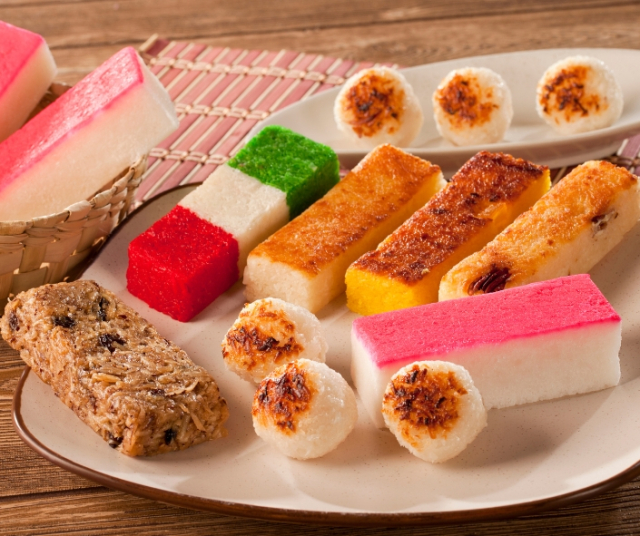Mexico, a land of contrasts and diversity, is not only famous for its rich culture, impressive landscapes and colorful festivities, but also for its delicious and varied offering of typical sweets. These delicacies, which have been passed down from generation to generation, not only satisfy the palate but also tell the story of the country's rich gastronomic heritage.
History of Typical Sweets in Mexico
The history of Mexican sweets dates back to the pre-Hispanic cultures that inhabited the region. The Aztecs and Mayans, known for their sophisticated cuisine, already cultivated and processed ingredients such as corn, cocoa, amaranth and various fruits to create their own sweets. The arrival of the Spanish in the 16th century introduced new ingredients such as sugar cane and vanilla, merging with native flavors.
The European influence not only brought new ingredients, but also confectionery techniques that were mixed with local traditions. Thus, sweets emerged such as ate, a type of fruit-based jelly, and the famous cajetas, goat's milk candies originating from Celaya, Guanajuato. The fusion of these two cultures gave rise to a wide variety of sweets that became an integral part of the Mexican gastronomic identity.
Emblematic Ingredients of Mexican Sweets
The richness of typical Mexican sweets lies in the diversity of ingredients used. Corn, present since pre-Hispanic civilizations, becomes the protagonist in desserts such as alegrías, made with amaranth and maguey honey. Cocoa, another ancient treasure, is transformed into chocolates and the base of traditional drinks such as champurrado.
Sugar cane, inherited from Spanish colonization, is used in the production of sweets such as cocadas and pulparindo. On the other hand, the fresh and tropical touch is provided by fruits such as tamarind, guava and coconut, present in sweets such as palanquetas and cocadas.
Vanilla, native to Veracruz, adds its subtle aroma to various sweet preparations, while walnuts, almonds and peanuts offer a crunchy contrast in sweets such as glorias and chili tamarinds. The mixture of these ingredients gives rise to a symphony of flavors that characterizes Mexican pastries.
Regional Sweets: Local Treasures that Awaken the Senses
Mexico is a vast and diverse country, with each region bringing its own spin to the candy tradition. In Oaxaca, for example, chocolate sweets are a handmade wonder. Oaxacan chocolate is recognized for its preparation with ancestral methods, using stone metates and mixing cocoa with cinnamon and almonds.
In Puebla, sweet potatoes are a specialty that dates back to colonial times. These sweets, made from sweet potatoes, sugar and cinnamon, are a delicacy that has been passed down from generation to generation and is part of local festivities.
In Guadalajara, the jericayas are protagonists. These traditional cakes are filled with candied fruits and sprinkled with icing sugar, creating a combination of flavors and textures that conquer the most demanding palates.
Each region has its own range of typical sweets that reflect the geographical and cultural diversity of Mexico. From the cajetones of Celaya to the gorditos of Querétaro, each bite is a unique experience that connects with local roots and traditions.
Sweets in Celebrations: Traditions that Sweeten Life
Typical Mexican sweets are not only present in everyday life, but also play a fundamental role in festivities and celebrations. The traditional piñatas, full of sweets and sweets, are an essential presence at birthday parties and Christmas posadas.
During the Day of the Dead, altars dedicated to departed loved ones are decorated with offerings that include sugar skulls, known as sugar skulls. These colorful creations are not only a tribute to ancestors, but also a reminder of the transience of life.
During the Christmas season, buñuelos and cocadas are classics that adorn the tables in every Mexican home. These sweets are not only culinary delights, but also bearers of meaning and tradition, creating family and community ties.
Salty Sweets: A Surprising Contrast
The richness of Mexican pastries goes beyond sweet flavors. Salty sweets, such as enchilated tamarinds and pelonas, surprise with their combination of sweet and sour and spicy flavors.
Tamarind, with its tangy and sweet flavor, becomes a delicious treat when coated with chili powder. This contrast of flavors and textures is an example of the creativity and audacity of Mexican cuisine, which is not afraid to explore new taste frontiers.
Innovation and Preservation: The Future of Typical Mexican Sweets
As society evolves, so does gastronomy. In the case of typical Mexican sweets, innovation is mixed with the preservation of traditions. Culinary artists and master confectioners find new ways to present classics, using modern techniques without losing the essence and authenticity of the original flavors.
The use of local and sustainable ingredients has also gained importance in the production of sweets. The search for healthier and more environmentally friendly options has led to the creation of sweets with organic ingredients and responsible production methods.
Internationally, the popularity of Mexican sweets has been increasing, taking these flavors to new horizons. The export of products such as cajeta, Oaxaca chocolate and chili tamarinds has contributed to spreading the richness of Mexican pastries throughout the world.
